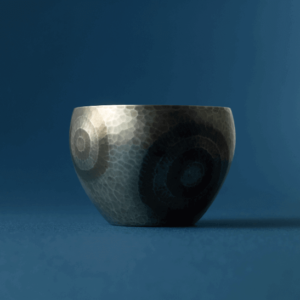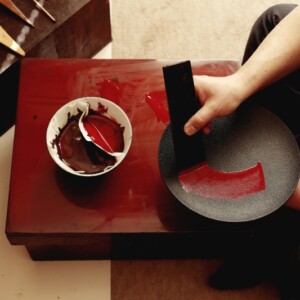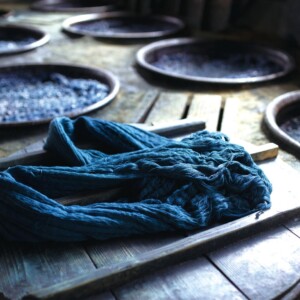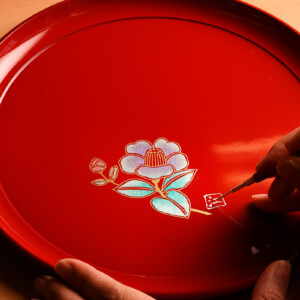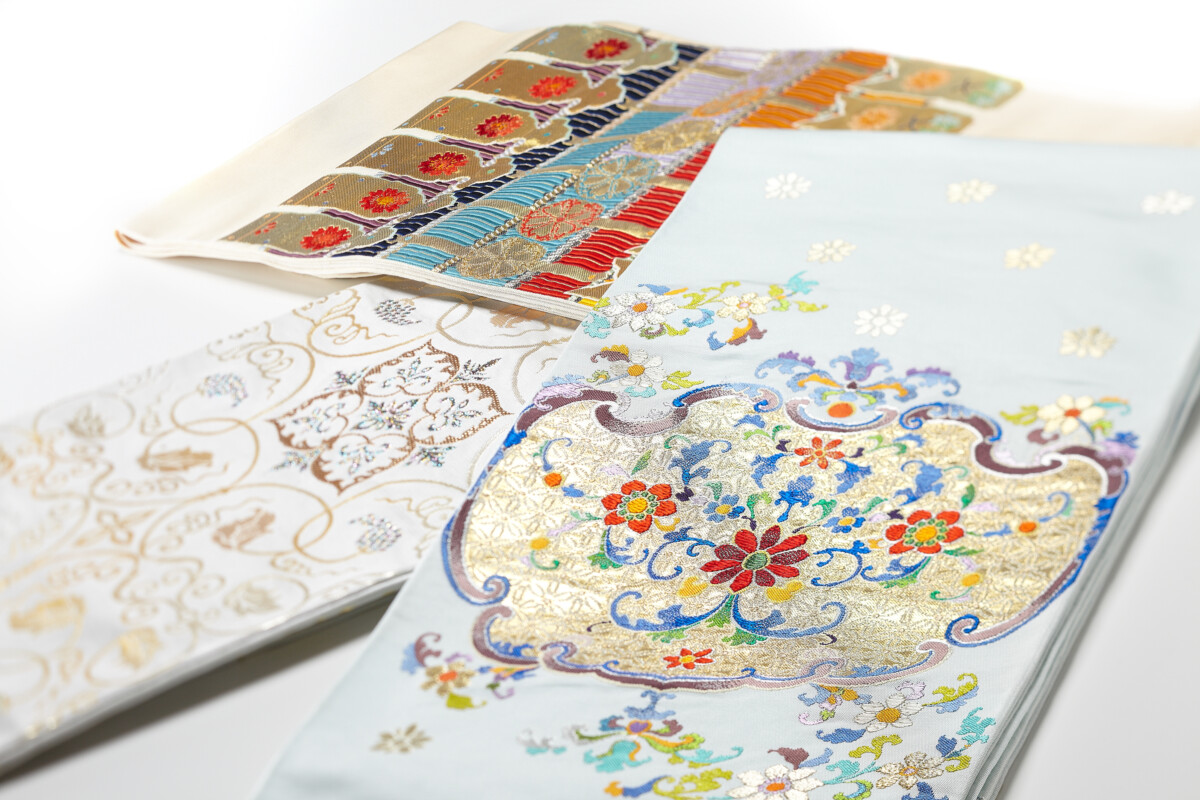
The Charm and Technique of Nishikiori
Weaving the New with the Old.”
Mitsumine Tatsumura’s Nishikori has brought innovation to the world of textiles and opened up new possibilities. He has devoted himself to researching traditional works and improving restoration techniques, whilecontinuing to work hard todevelop new designs.MitsumineTatsumura‘s textilestruly embody the concept of “weaving from the past,” and are attracting a great deal of attention from around the world.This articledescribes the history of Mitsumine Tatsumura and the characteristics of his techniques.
About Mitsumine Tatsumura, Nishikiori Kyoto

First of all, let us introduce the history of Mitsumine Tatsumura. Mitsumine Tatsumurais a long-established workshop with a 130-year history that began in1894when Heizo Tatsumura I founded the textile business.The company has heldexhibitionsand lectures inJapan and abroad, and has attracted attention from around the world.
What is Nishikiori?
Nishikioriis a textile introduced to Japan from China more than1,400years ago. Its surface, made of silk, has the property of changing its expression with each passing moment and light. The silk threads are shaped like translucent glass rods, and their cross-sections resemble triangles, forming a prism-like structure, also known as a “silk prism. This structure allows light to pass through and reflect off the glass, giving it a complex diamond-like brilliance. The patterns produced by brocade have a kaleidoscopic beauty because they are directly affected by light, which varies with temperature and humidity.
Nishiki” is used not only to refer to textiles, but also to describe something beautiful or splendid. Nishiki” is the highest art form of silk fabrics, and it is said that no other fabrics in the world are as colorful and elegant. Historically, it has been an object of admiration for the Japanese, and is something to be proud of as Japanese beauty to the world.
HeizoTatsumura I
Heizo Tatsumura I, who brought “innovation” to the world of textiles, devoted himself to the research of traditional textiles such as ancient textiles from Horyuji Temple and the Shosoin Repository, and led the status of textiles to the “realm of art” as the leading authority in their restoration.
Ryunosuke Akutagawa, who had interacted with Heizo, fell in love with Heizo’s work and said, “Many of Mr. Tatsumura’s obi fabrics had [omitted] a formidable artistic perfection. I was forced to bow down for this artistic perfection more than anything else,” he wrote in the “Tokyo Nichinichi Shinbun” (Tokyo Daily News). This episode made Heizo Tatsumura’s name unshakeable and furthermore, it was the beginning of the spread of the expression “textile art” throughout Japan.
Heizo Tatsumura also produced fabrics at the request of famous overseas brands such as Christian Dior. His field of activity expanded to the world.
Mitsumine Tatsumura’s weaving techniques and traditions
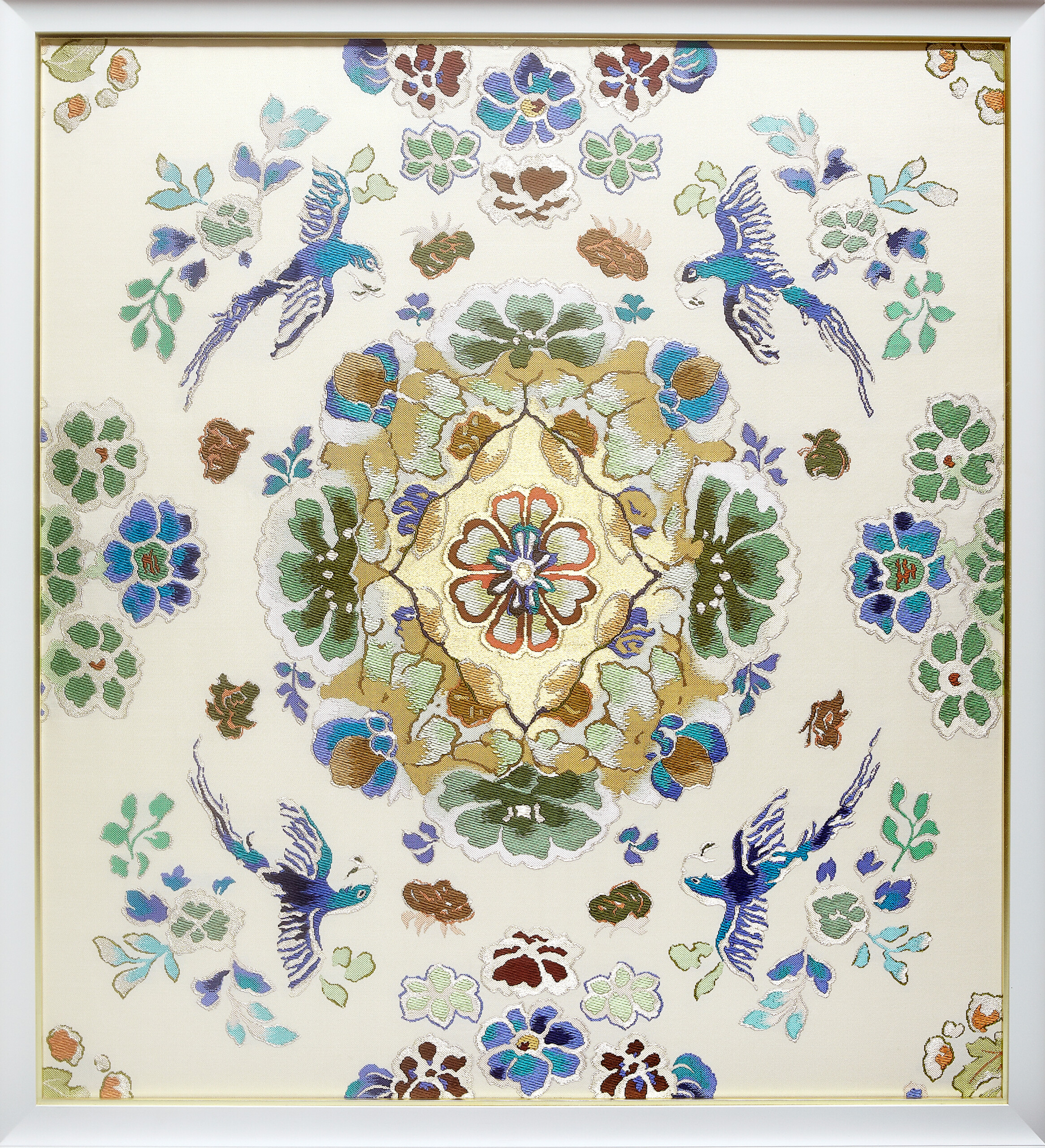
The will and techniques of Heizo TatsumuraI werepassed on toHeizo Tatsumura II andMitsumineTatsumura III.During this period, Tatsumura Mitsumine continued to leave behind numerous achievements, including the Grand Prize at the World Exposition in Paris and the World Handicraft Exposition in Berlin, as well as the Japan Traditional Culture Promotion Award.
In 1982, the company namewas changed to MitsumineTatsumura, and in 2012,Shu Tatsumura assumed the position of representative director, effectively marking the fourth generation of succession.

Shu Tatsumura, the current representative director, feels that “weaving has the power to communicate with people’s hearts,” and he holds weaving workshops in Kyoto, Tokyo, and Shizuoka. He also goes to the workshop to teach weaving himself,firmly inheriting the philosophy of MitsumineTatsumura, the third generation,of “passing on traditional textiles.
Through weaving experiences with numerous students, Shu Tatsumura says that weaving has a purifying effect on the mind, similar to meditation. Weaving can be seen as a “technique to accompany nature,” as it involves growing silk, making machines out of wood, and using tools made of bamboo.
MitsumineTatsumuraDesign 3
MitsumineTatsumurahas been restoring textiles found in historical buildings beyond national borders. The total number of his designs exceeds 140. Please take a look at the background behind the designs.
Ammonite Nishiki

Ammonites are important in ancient biology and geology and are a valuable source of information about our earth’s past.The philosophy of MitsumineTatsumurais “Weaving with warmth and innovation.He has researched and restored the wonderful textile arts of antiquity, and has worked with artisans to pass on traditional techniques to future generations. Just like ammonites,MitsuhouTatsumurais an indispensable figure inthe history of textiles.This “Ammonite Nishiki,” which also contains such meaning, isone ofMitsumineTatsumura‘s representativedesigns, although it is a new work by Shu Tatsumura, released in 2020.
Chrysanthemum and Phoenix Design Nishiki (Kikka Hououmon Kin)

This work was designed based on the model of the Shosoin-split “green-ground brocade with flower, bird, and beast design” that was restored bythe Society for the Preservation of Japanese Traditional Textiles(now the Japan Institute for Traditional Textiles) as part of its “comprehensive restoration project of yarn-dyed brocades”. The “chrysanthemum” represents the sun and the “phoenix” expresses benevolence and mercy as the king of birds. As is well known in the mural paintings of the Takamatsuzuka burial mound, Suzaku, one of the four gods in ancient beliefs, ruled the universe together with the Blue Dragon, White Tiger, and Genbu, and was revered and respected.
This work is woven with the hope of reviving the spirit of the ancient people in the modern age. It is trulythe quintessential design of MitsumineTatsumura, who makes restoration his profession.
Jucho Monkin Nishiki (brocade with bird design)
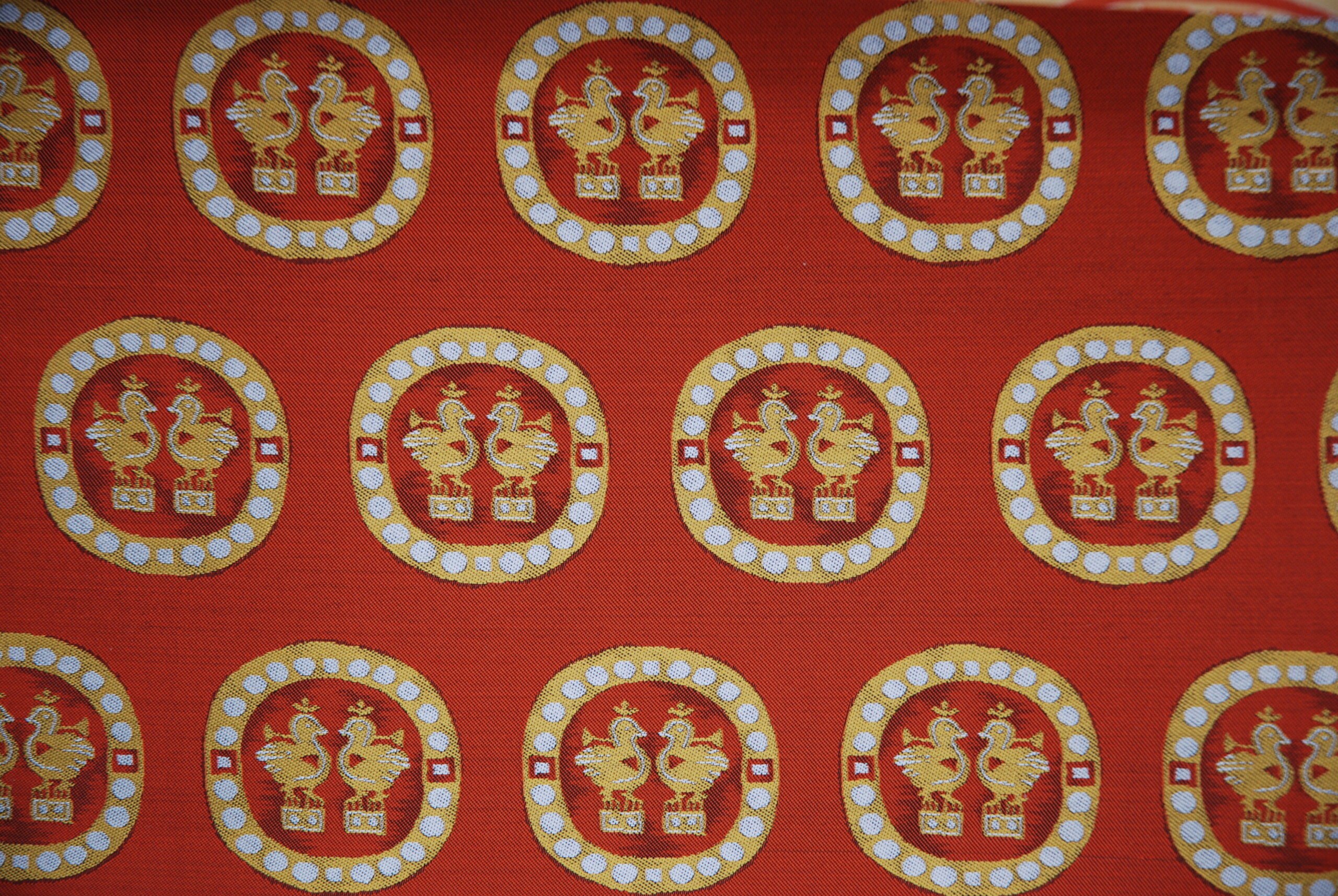
This brocade was invented based on the design of ancient brocades, which was excavated from Astana, Turfan, Xinjiang Uygur Autonomous Region, China, with the design of a pair of beads with a bird design. It is an exquisitely balanced pattern that is neither beautifully circular nor symmetrical.
It is said that the sensitivity cherished by the ancients and their profound expressions were expressed on the brocade in the hope of conveying them to the modern world.This design is the reason why MitsumineTatsumura, whostudies and passes down the good old things not only in Japan but also in the world, has become famous worldwide.
Conclusion
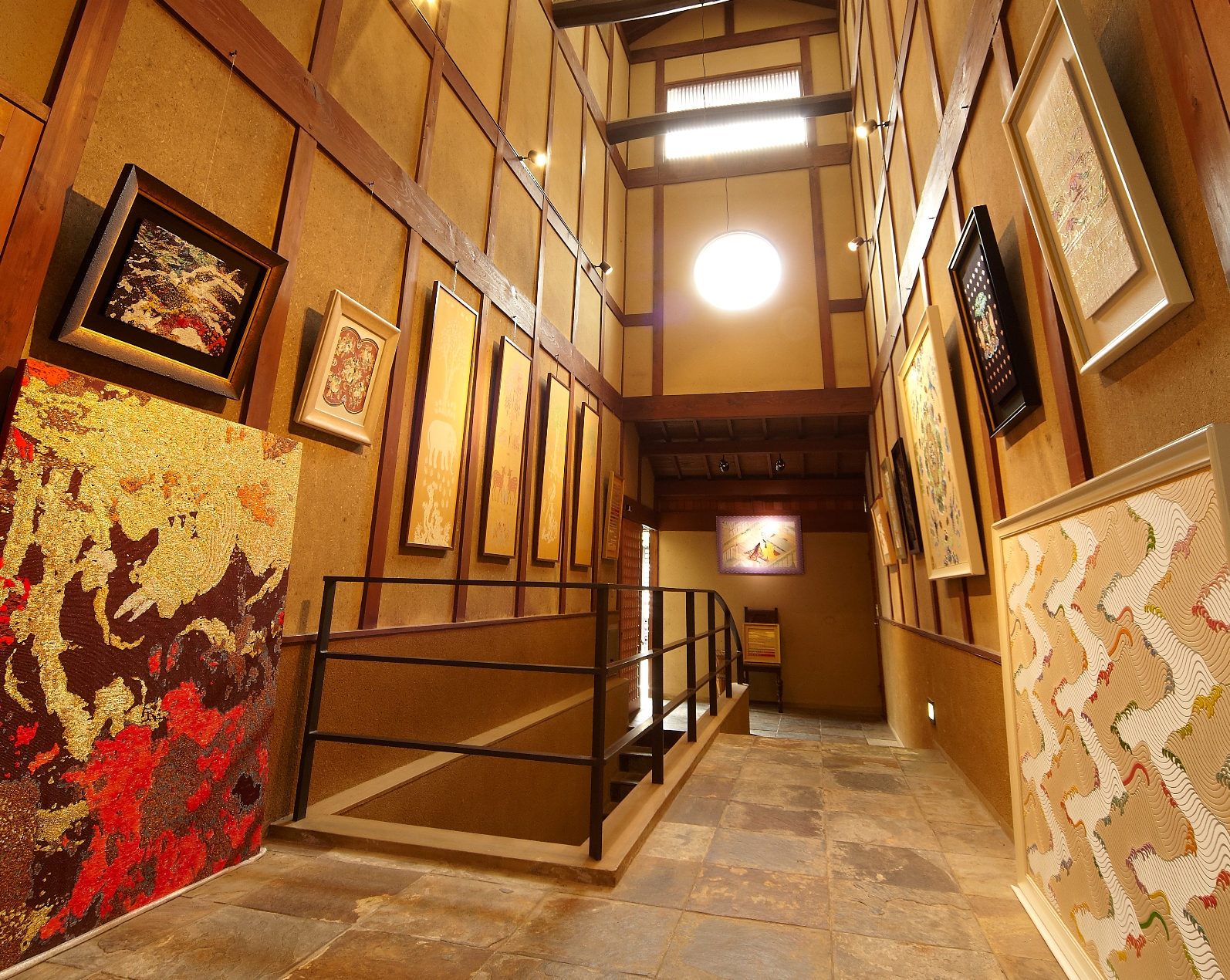
In this issue,we introduced the history of Mitsumine Tatsumura and the designs created from his masterful techniques. Although we were only able to introduce a few of his designs,MitsumineTatsumurahas restored and redesigned textiles from all over the world, resulting in more than 140 different works.
MitsumineTatsumuraalso focuses on hands-on activities in terms of handing down the art to future generations. The workshop offers a menu of experiences to suit any purpose, including not only sightseeing but also VIP hospitality, corporate training, school excursions, and children’s free research. The workshop has been attracting attention from all over the world, and in recent years, many visitors from overseas have come to the workshop, making it an indispensable place for exchanges that transcend nationalities, from children to senior citizens. Why not experience the world of textiles up close and personal?



